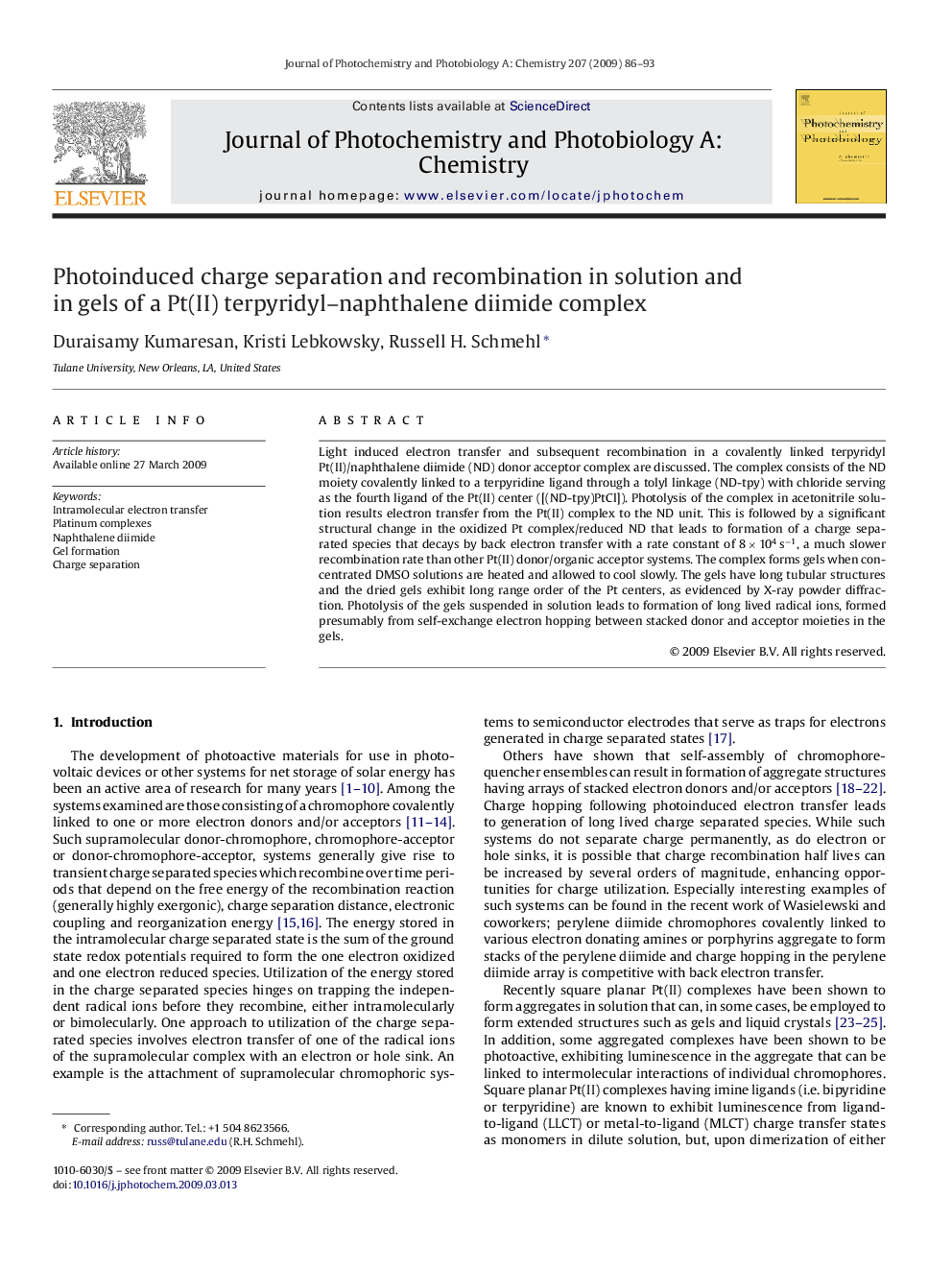| Article ID | Journal | Published Year | Pages | File Type |
|---|---|---|---|---|
| 27309 | Journal of Photochemistry and Photobiology A: Chemistry | 2009 | 8 Pages |
Light induced electron transfer and subsequent recombination in a covalently linked terpyridyl Pt(II)/naphthalene diimide (ND) donor acceptor complex are discussed. The complex consists of the ND moiety covalently linked to a terpyridine ligand through a tolyl linkage (ND-tpy) with chloride serving as the fourth ligand of the Pt(II) center ([(ND-tpy)PtCl]). Photolysis of the complex in acetonitrile solution results electron transfer from the Pt(II) complex to the ND unit. This is followed by a significant structural change in the oxidized Pt complex/reduced ND that leads to formation of a charge separated species that decays by back electron transfer with a rate constant of 8 × 104 s−1, a much slower recombination rate than other Pt(II) donor/organic acceptor systems. The complex forms gels when concentrated DMSO solutions are heated and allowed to cool slowly. The gels have long tubular structures and the dried gels exhibit long range order of the Pt centers, as evidenced by X-ray powder diffraction. Photolysis of the gels suspended in solution leads to formation of long lived radical ions, formed presumably from self-exchange electron hopping between stacked donor and acceptor moieties in the gels.
